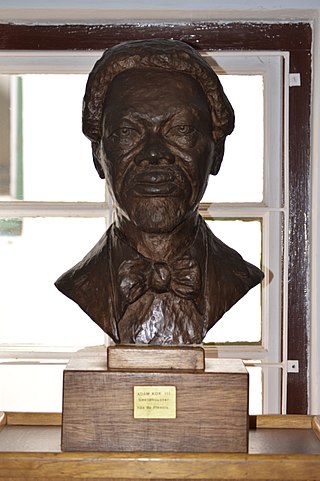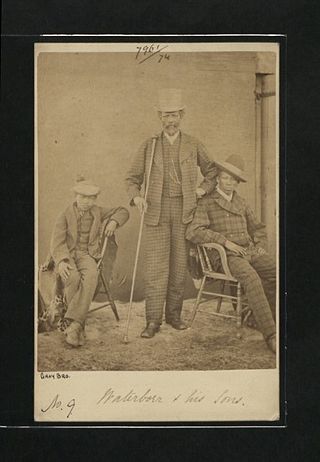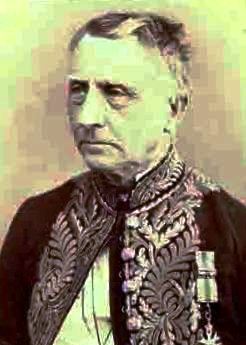
The Griqualand West Annexation Act (Act 39 of 1877), was the act, passed in the Cape Colony Parliament on 27 July 1877, authorising the union of the Cape Colony with Griqualand West.

The Griqualand West Annexation Act (Act 39 of 1877), was the act, passed in the Cape Colony Parliament on 27 July 1877, authorising the union of the Cape Colony with Griqualand West.

Griqualand West, one of the states created by the semi-nomadic Griqua people, was brought under British rule, as a separate colony, on 27 October 1871. It contained the newly discovered diamond fields of Kimberley and was beginning to attract large numbers of prospectors. With possession of this land being claimed by the Orange Free State, and contested by the arriving diamond diggers, the Griqua leader Nicolaas Waterboer requested that the Cape Colony incorporate Griqualand West, as this would give his people representation in the Cape Parliament and a certain degree of political empowerment.
The Cape Colony, under Responsible Government from 1872, explicitly adhered to a policy of incorporating "natives" into the Cape's political and economic system. This was quite unlike the policy in the Orange Free State which was vying for control of the diamond fields and the other southern African states which generally segregated their populations and excluded non-white peoples from political participation. This factor no doubt influenced Waterboer's decision, however the Cape government initially decided against incorporating the territory, due primarily to objections from both the European settlers and from certain portions of the indigenous population.
Upon the Cape's initial refusal to incorporate it in 1873, Griqualand West became a separate British Crown Colony, with Sir Richard Southey as its Administrator and Lieutenant Governor. [1] There followed bitter land disputes between the white diggers, the Griqua people and the Orange Free State. A land court was set up, under Judge Andries Stockenstrom, but this did little to resolve the disagreements. In 1875 Southey was replaced as Lieutenant Governor by Major William Owen Lanyon, who publicly professed a great dislike for the Griqua people and for Griqualand West overall, which he dubbed a "hideous and disgusting place". He oversaw a systematic dispossession of the Griqua people.
The Cape finally agreed to incorporate the territory four years later in 1877, following agreement by the British government on compensation to the Orange Free State for its competing land claims. [2] The Cape Prime Minister John Molteno still had serious doubts about annexing the heavily indebted region, but, after striking a deal with the Home Government and receiving reassurances that the local population would be consulted in the process, he passed the Griqualand West Annexation Act on 27 July 1877. [3]

The act specified that Griqualand West would have the right to elect four representatives to the Legislative Assembly of the Cape parliament, two for Kimberley and two for the Barkly West region. It would also elect one representative to the Legislative Council, the smaller upper house. In the judiciary, the local Griqua attorney-general reported to the Cape Supreme Court, which got concurrent jurisdiction with the Griqualand West Supreme Court in the territory. [4]
The act was not without controversy however. The seats were allocated according to population, but Kimberley representatives argued that the number should be increased to represent the relative wealth of the area. The Cape Government also enforced its non-racial Cape Qualified Franchise system. This meant that all resident males could qualify for the vote, with the qualifications for suffrage applied equally regardless of race. This was welcomed by the Griqua and Tswana majority, but rejected by the diggers, who comprised much of the white minority. [5]
The promulgation of the act was set for 18 October 1880, when the last Lieutenant Governor, James Rose Innes stepped down and direct British imperial rule over the territory ended.
Many spent (obsolete) sections of the act were repealed on 19 May 1934 by the Cape Statute Law Revision Act, 1934. Another section was repealed on 14 June 1967 by the Pre-Union Statute Law Revision Act, 1967, and the remainder of the act was repealed on 2 September 1970 by the Pre-Union Statute Law Revision Act, 1970.

The Union of South Africa was the historical predecessor to the present-day Republic of South Africa. It came into existence on 31 May 1910 with the unification of the Cape, Natal, Transvaal, and Orange River colonies. It included the territories that were formerly a part of the South African Republic and the Orange Free State.

The first modern humans are believed to have inhabited South Africa more than 100,000 years ago. South Africa's prehistory has been divided into two phases based on broad patterns of technology: the Stone Age and Iron Age. Australopithecine fossils have been discovered at Taung and in limestone caves at Sterkfontein, Swartkrans and Kromdraai. In 1999, Unesco designated the region the Cradle of Humankind World Heritage site.

The Orange Free State was an independent Boer sovereign republic under British suzerainty in Southern Africa during the second half of the 19th century, which ceased to exist after it was defeated and surrendered to the British Empire at the end of the Second Boer War in 1902. It is one of the three historical precursors to the present-day Free State province.

Kimberley is the capital and largest city of the Northern Cape province of South Africa. It is located approximately 110 km east of the confluence of the Vaal and Orange Rivers. The city has considerable historical significance due to its diamond mining past and the siege during the Second Anglo-Boer war. British businessmen Cecil Rhodes and Barney Barnato made their fortunes in Kimberley, and Rhodes established the De Beers diamond company in the early days of the mining town. It was one of the host cities for the 2010 Fifa World Cup.

The Boer republics were independent, self-governing republics formed by Dutch-speaking inhabitants of the Cape Colony and their descendants. The founders – variously named Trekboers, Boers and Voortrekkers – settled mainly in the middle, northern, north-eastern and eastern parts of present-day South Africa. Two of the Boer Republics achieved international recognition and complete independence: the South African Republic and the Orange Free State. The republics did not provide for the separation of church and state, initially allowing only the Dutch Reformed Church, and later also other Protestant churches in the Calvinist tradition. The republics came to an end after the Second Boer War of 1899–1902, which resulted in British annexation and later incorporation of their lands into the Union of South Africa.
The Griquas are a subgroup of mixed race heterogeneous former Khoe-speaking nations in Southern Africa with a unique origin in the early history of the Dutch Cape Colony. Under apartheid, they were given a special racial classification under the broader category of "Coloured". They are Cape Coloureds who participated in the Great Trek, forming “Griqua States”.

Griqualand West is an area of central South Africa with an area of 40,000 km2 that now forms part of the Northern Cape Province. It was inhabited by the Griqua people – a semi-nomadic, Afrikaans-speaking nation of mixed-race origin, who established several states outside the expanding frontier of the Cape Colony. It was also inhabited by the pre-existing Tswana and Khoisan peoples.

Griqualand East, officially known as New Griqualand, was one of four short-lived Griqua states in Southern Africa from the early 1860s until the late 1870s and was located between the Umzimkulu and Kinira Rivers, south of the Sotho Kingdom.
Jacobsdal is a small farming town in the Free State province of South Africa with various crops under irrigation, such as grapes, potatoes, lucerne, and groundnuts. The town was layout in 1859 by Christoffel Jacobs on his farm Kalkfontein, and today houses 3,504 inhabitants.

Griekwastad is a country town in South Africa. It is sometimes still called Griquatown, a name which is now considered historical. The town is in the Northern Cape Province of South Africa 168 kilometres (104 mi) by road west from the city of Kimberley. It was the first town to be established in the country north of the Orange River.
The following lists events that happened during 1873 in South Africa.

Adam Kok III was a leader of the Griqua people in South Africa.

Andries Waterboer was a leader ("kaptijn") of the Griqua people.
The Cape Colonial Forces (CCF) were the official defence organisation of the Cape Colony in South Africa. Established in 1855, they were taken over by the Union of South Africa in 1910, and disbanded when the Union Defence Forces were formed in 1912.

Sir Richard Southey was a British colonial administrator, cabinet minister and landowner in South Africa.

The South African Wars, including the Confederation Wars, were a series of wars that occurred in the southern portion of the African continent between 1879 and 1915. Ethnic, political, and social tensions between European colonial powers and indigenous Africans led to increasing hostilities, culminating in a series of wars and revolts, which had lasting repercussions on the entire region. A key factor behind the growth of these tensions was the pursuit of commerce and resources, both by countries and individuals, especially following the discoveries of diamonds in the region in 1867 and gold in 1862.

The Nooitgedacht Glacial Pavements comprise a geological feature between Kimberley and Barkly West, South Africa, pertaining to the Palaeozoic-age Dwyka Ice Age, or Karoo Ice Age, where the glacially scoured ancient bedrock was used, substantially more recently, during the Later Stone Age period in the late Holocene as panels for rock engravings.

Justice Andries Stockenström, second son of Sir Andries Stockenström, was an influential judge in the Cape Colony. He was appointed Attorney-General of the Cape in 1877, but died soon after his appointment at the age of 36.

Nic(h)olaas Waterboer was a leader ("Kaptijn") of the Griqua people.
The Cape Mounted Police was the principal law enforcement agency of the Cape Colony during its last three decades. In addition to its ordinary policing duties, it was a para-military organisation, which saw active service in several campaigns and operations, including the Anglo-Boer War (1899–1902). The force was fully militarised in 1913 and transferred to the new South African Army as a mounted rifle regiment.